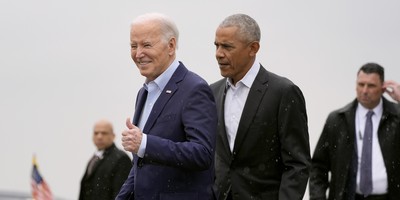While the market was surprised last week when the Federal Reserve’s Open Market Committee decided to keep monetary stimulus going (also known as quantitative easing), it’s becoming clear that Obamacare is one of the driving forces behind the decision.
“The economy still needs the support of a very accommodative monetary policy,” said William Dudley, last week in a speech in New York according to the text of the speech provided by Bloomberg.com. Dudley is vice chairman of the Federal Open Market Committee, the committee that decides on continued quantitative easing measures. “Improving economic fundamentals versus fiscal drag and somewhat tighter financial conditions,” he said, “are pulling the economy in opposite directions, roughly cancelling each other.”
Dudley later more closely defined what he meant regarding fiscal drag by pointing to: 1) tax increases and 2) government budget cuts. But he also pointed out that the jobs picture isn’t quite a rosy as all that, either.
The unemployment rate, which has declined from 8.1 percent to 7.3 percent, top line, he said “overstates the degree of improvement” that jobs have made in the economy overall.
Last December Fed chair Ben Bernanke said that the reserve bank would like to see stimulus measures end when unemployment reached 6.5 percent.
But in June of this year, Bernanke then introduced new math to the equation by saying that unemployment would likely be around 7 percent when the tapering of quantitative easing would end.
“In this scenario when asset purchases ultimately come to an end the unemployment rate would likely be in the vicinity of 7%,” Bernanke told a press conference, “with solid economic growth supporting further job gains — a substantial improvement from the 8.1% unemployment rate that prevailed when the committee announced this program.”
Recommended
Bernanke said back then that quantitative easing would be wrapping up sometime next year, while actual tapering would likely begin this fall.
And what’s changed since then?
As Dudley has pointed out, the labor market isn’t as robust as the underlying numbers would suggest.
And the labor market is being adversely affected by Obamacare.
“I think businesses are very uncertain as to what's going to happen,” Bob Funk, CEO of Express Employment Services, the country’s fifth largest staffing company told CNBC. “And many companies are going to flexible staffing, instead of full-time employment. And our position as a company we want to go from part-time staffing or temporary staffing to full-time employment. The government's going just the opposite direction, from 40-hour workweek down to 29-hour workweek. Great for our company, but not healthy for the country.”
While some commentators have felt that the weakness in Europe, Japan and China may have also played a part in the Fed’s decision, each of those has it’s own accommodative central bank that is pouring money out by the bushel full.
This week we’ll hear from a host of Fed presidents who will weigh in on all the reasons why the Fed stood pat.
Some of them may not be entirely supportive of the Fed’s continuation of quantitative easing.
In early September noted monetary hawk Dallas Fed president Richard Fisher said that Obamacare was hurting the economy and quantitative easing was not helping with hiring. He is widely quoted as saying “I was against QE3. I don’t believe it had any efficacy” in terms of the labor market and hiring.
“Ask any manufacturer what holds him or her back and they will tell you that they can’t operate in a fog of total uncertainty concerning how they will be taxed or how government spending will impact them or their customers directly,” Fisher told US manufacturers in August “And as to asking their opinion of the impact of regulation on their businesses—from the Affordable Care Act to the thousands of other regulations enumerated in the Federal Register—don’t even go there, unless you delight in hearing profanities.”
The problem says Fisher is how to end quantitative easing without killing the financial markets.
One need only look at the rally in the Ten-Year Treasury on the heels of the decision by the Fed to continue monetary stimulus to see how stimulus dependent financial markets are.
But financial markets are necessarily healthy when they are making new highs.
Instead, financial markets’ dependency on QE when combined with the ill effects of Obamacare, are killing us.
























Join the conversation as a VIP Member